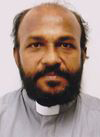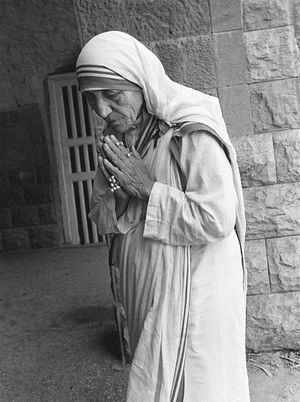
“By blood, I am Albanian. By citizenship, an Indian. By faith, I am a Catholic nun. As to my calling, I belong to the world. As to my heart, I belong entirely to the Heart of Jesus.” These are the words of Mother Teresa, whose canonisation falls on September 4. Mother Teresa, though a frail woman with a wrinkled face, was a colossus of a missionary for the poor with the radiance of merciful love. Pope Francis chose to raise her to the altar of sanctity during the extraordinary Jubilee Year of Mercy as she truly radiated the mercy of God. The date of canonisation is on the eve of Mother’s 19th death anniversary. The world, thereafter, would keep the feast of Saint Teresa of Kolkata on September 5 every year, the day she went to eternal bliss.
The Rite of Canonisation is the official ceremony of raising a blessed person to the altar of sanctity. It is incorporated into the Eucharistic celebration of that day. Pope Francis will officiate the rite of sainthood and the Holy Mass of Mother Teresa in Vatican. The rite of canonisation is reserved to the Pope as per the rules of the church. The venue is Saint Peter’s Square in Vatican that can accommodate about 4 lakh people. Giant screens and other media links are also set up for better participation of the global gathering of the faithful and dignitaries.
In the Introductory Rite, Sister Prema, the Superior General of the Missionaries of Charity, will make a formal request to the Holy Father to canonise Blessed Teresa of Kolkata. Then the life sketch of the saint is read with her virtuous merits by Cardinal Angelo Amato, the Prefect of the Congregation for the Causes of Saints, accompanied by the Postulator of the sainthood of Mother Teresa, Father Brian Kolodiejchuk of the Missionaries of Charity Fathers. At the end of the reading, people sing praise to God (Laudate), expressing joy and gratitude to God for the person of Mother Teresa who served the poor of the world.
 (FILE) Mother Teresa prays at the Missionaries of Charity in East Beirut, Aug 15, 1982 | AP
(FILE) Mother Teresa prays at the Missionaries of Charity in East Beirut, Aug 15, 1982 | AP
The Litany of All Saints, the traditional prayer of the Church, is sung, interceding the help of all saints. The pronouncement of the Formula of Canonisation by the Pope reads, “In honor of the Triune God, trusting in Jesus Christ the Lord and after long deliberation, calling on the divine help and having heard the opinion of many of our brothers and sisters, decree that Blessed mother Teresa of Kolkata be devoutly honored among the saints throughout the church in the name of the Father and the Son and the Holy Spirit. Amen.” When Mother Teresa is declared Saint by the Pope, the faithful respond by singing Amen three times as the highest expression of consent and joy.
The Veneration of the Relic follows the declaration. The relic is a part of the physical body of the saint. The relic of the new saint Mother Teresa will be brought to the altar in procession for veneration. The faithful who have gathered acclaim cheerfully the Mother of the Poor who is now the Saint of the universal Church by chanting Alleluia. The choir of Sistine Chapel chorus with 60 singers and the 200-member choir of the diocese of Rome leads the singing.
The Eucharistic celebration will continue with the singing of Gloria, the proclamation of the Word of God. Pope Francis would preach, highlighting the saint and her virtues. The rites of liturgy will follow through offertory, consecration and communion. Before the final blessing, there is also the custom of saying Angelus, the Marian prayer. Then the Pope will give a short Marian message, thanking all. To conclude the celebration, the Apostolic blessing is imparted to all gathered in Vatican and to all participating in it through different media all over the world.
The significance of the celebration is the joy in the communion of saints and the universal call to holiness. Every Christian is called to journey towards the life of sanctity in imitation of Christ. Mother Teresa did so when she closely embraced the words of Christ, “Whatsoever you do to the least of my brothers and sisters that you did to me” (Mt. 25:45).
Fr. William Nellikal is in charge of the Malayalam section of the Vatican Radio.





